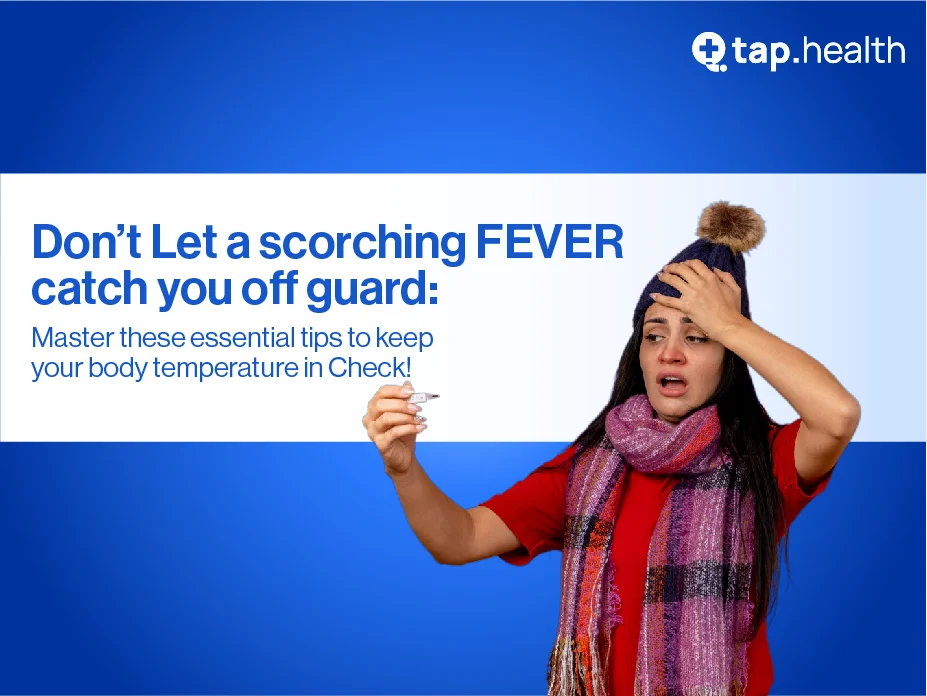Hyperpyrexia, a condition marked by an extremely high body temperature above 41.5°C (106.7°F), is a medical emergency that demands immediate attention. Unlike a typical fever, hyperpyrexia can lead to severe complications like organ damage or seizures if not addressed promptly. This blog explores actionable strategies to prevent hyperpyrexia, covering its causes, symptoms, and management techniques to help you stay safe and healthy.
What Is Hyperpyrexia and Why Is It Dangerous?
Hyperpyrexia is defined as a body temperature exceeding 41.5°C (106.7°F), far beyond a standard fever. It overwhelms the body’s thermoregulatory system, causing symptoms like confusion, rapid heart rate, seizures, or even loss of consciousness. Unlike fever, which often signals an infection, hyperpyrexia can stem from various causes, including heatstroke, drug reactions, or neurological conditions, making it life-threatening if untreated.
Key Characteristics:
- Extreme temperature elevation
- Symptoms like delirium, muscle cramps, and sweating
- Risk of organ damage or cardiovascular complications
Preventing hyperpyrexia involves understanding its triggers and taking proactive steps to mitigate risks. Early recognition and intervention are critical to avoiding severe outcomes.
What Causes Hyperpyrexia?
Hyperpyrexia can arise from multiple factors, each requiring specific preventive measures. Below are the primary causes and how to address them:
1. Heatstroke and Heat-Related Illnesses
Heatstroke occurs when prolonged exposure to high temperatures overwhelms the body’s cooling mechanisms, leading to a rapid temperature spike. It’s a leading cause of hyperpyrexia, especially for those in hot, humid environments or engaging in intense physical activity.
Prevention Tips:
- Stay Hydrated: Drink plenty of water, especially during outdoor activities or hot weather.
- Dress Appropriately: Wear lightweight, loose-fitting clothing to promote heat dissipation.
- Avoid Peak Heat: Limit strenuous activities during the hottest parts of the day (typically 10 a.m. to 4 p.m.).
- Seek Shade or Cooling: Use air-conditioned spaces or fans to stay cool.
- Monitor Symptoms: Watch for signs of heat exhaustion, like nausea or dizziness, and act quickly to cool down.
2. Drug Reactions
Certain medications, such as antibiotics, antipsychotics, or anesthetics, can trigger hyperpyrexia (also known as malignant hyperthermia in some cases). Illicit drugs like cocaine or amphetamines may also cause this reaction.
Prevention Tips:
- Know Your Medications: Consult your doctor about potential side effects of prescribed drugs.
- Monitor Reactions: Be vigilant for symptoms like sudden fever, muscle rigidity, or confusion after starting a new medication.
- Avoid Illicit Drugs: Steer clear of substances known to disrupt thermoregulation.
- Inform Healthcare Providers: Share your medical history, especially any past adverse drug reactions, with your doctor.
3. Neurological Conditions
Conditions like meningitis, encephalitis, brain tumors, or severe head injuries can disrupt the brain’s temperature regulation, leading to hyperpyrexia.
Prevention Tips:
- Seek Early Treatment: Promptly address symptoms of neurological conditions, such as persistent headaches or fever, with medical care.
- Vaccinations: Stay up-to-date on vaccines for preventable infections like meningitis.
- Protect Against Head Injuries: Use helmets during sports or activities with risk of head trauma.
4. Metabolic Disorders
Disorders like thyroid storm, serotonin syndrome, or malignant hyperthermia can cause abnormal metabolic activity, resulting in hyperpyrexia.
Prevention Tips:
- Regular Checkups: Monitor chronic conditions like thyroid disorders with routine medical evaluations.
- Medication Adherence: Follow prescribed treatment plans to manage metabolic conditions effectively.
- Avoid Triggering Substances: Be cautious with medications or supplements that may cause serotonin syndrome.
5. Other Causes
Severe infections (e.g., sepsis) or autoimmune diseases can also trigger hyperpyrexia in rare cases.
Prevention Tips:
- Prompt Infection Treatment: Seek medical care for signs of infection, such as high fever or chills.
- Manage Chronic Conditions: Work with healthcare providers to control autoimmune or genetic disorders.
How to Recognize Hyperpyrexia Symptoms
Early detection of hyperpyrexia is vital for prevention and treatment. Key symptoms include:
- Body temperature above 41.5°C (106.7°F)
- Intense sweating or hot, dry skin
- Confusion, delirium, or irritability
- Rapid breathing or heart rate
- Muscle cramps or rigidity
- Seizures or loss of consciousness
If you or someone else exhibits these signs, seek emergency medical help immediately. Delaying treatment can lead to serious complications like brain damage or organ failure.
How Is Hyperpyrexia Diagnosed?
Diagnosing hyperpyrexia involves identifying the underlying cause to guide treatment. Healthcare providers typically:
- Review Medical History: Assess risk factors, recent medication use, or exposure to heat.
- Perform Physical Exams: Measure body temperature and check for symptoms like altered mental status.
- Conduct Tests: Use blood tests, urine tests, imaging (e.g., CT scans), or lumbar punctures to identify infections, inflammation, or neurological issues.
Accurate diagnosis ensures targeted treatment, reducing the risk of complications.
Effective Strategies to Prevent Hyperpyrexia
Preventing hyperpyrexia requires a combination of lifestyle adjustments, awareness, and proactive health management. Below are essential strategies to keep your body temperature in check:
1. Avoid Heat-Related Risks
- Limit Heat Exposure: Avoid prolonged time in hot, humid environments.
- Use Cooling Measures: Apply cool compresses or take cool showers during hot weather.
- Stay Informed: Check weather forecasts and heat advisories before outdoor activities.
2. Maintain Proper Hydration
- Drink Water Regularly: Aim for 8–10 glasses of water daily, more if active or in hot conditions.
- Use Electrolyte Drinks: Replenish electrolytes lost through sweating during intense activity.
- Monitor Urine Color: Pale yellow urine indicates good hydration.
3. Monitor Medications
- Consult Pharmacists: Understand the side effects of medications, especially those linked to hyperpyrexia.
- Report Adverse Reactions: Inform your doctor immediately if you experience unusual symptoms after starting a new drug.
4. Act Quickly on Infections
- Seek Timely Treatment: Address infections with antibiotics or antivirals as prescribed.
- Monitor Fever: Use a reliable thermometer to track body temperature during illness.
5. Stay Vigilant for Symptoms
- Know the Signs: Be aware of hyperpyrexia symptoms, especially during heatwaves or illness.
- Act Promptly: Seek medical help if temperature exceeds 41.5°C (106.7°F) or symptoms like confusion appear.
Treatment Options for Hyperpyrexia
If hyperpyrexia occurs, immediate action is critical. Treatment focuses on lowering body temperature and addressing the underlying cause:
- Cooling Measures: Apply ice packs, cooling blankets, or immerse in an ice bath.
- Hydration: Administer intravenous fluids to restore fluid balance.
- Medications: Use antipyretics like acetaminophen or treat specific causes (e.g., antibiotics for infections).
- Supportive Care: Monitor vital signs and organ function in a medical facility.
Always seek professional medical care for hyperpyrexia, as home remedies alone are insufficient.
When to Seek Medical Help
Hyperpyrexia is a medical emergency. Contact a healthcare provider or call emergency services if you notice:
- A temperature above 41.5°C (106.7°F)
- Confusion, seizures, or unconsciousness
- Rapid heart rate or breathing
- Severe muscle cramps or rigidity
Prompt intervention can prevent life-threatening complications like organ damage or death.
FAQs About Hyperpyrexia Prevention
What is the difference between fever and hyperpyrexia?
Fever is a common response to infection, typically below 41.5°C (106.7°F), while hyperpyrexia is an extreme, dangerous temperature elevation requiring urgent care.
How can I prevent heatstroke-related hyperpyrexia?
Stay hydrated, avoid strenuous activity in hot weather, wear light clothing, and seek shade or air-conditioned spaces.
Can medications cause hyperpyrexia?
Yes, certain drugs like antipsychotics, antibiotics, or anesthetics can trigger hyperpyrexia. Consult your doctor about risks.
What should I do if I suspect hyperpyrexia?
Seek immediate medical help. Apply cooling measures like cold compresses while awaiting emergency care.
Are certain people more at risk for hyperpyrexia?
Yes, those with neurological conditions, metabolic disorders, or working in hot environments are at higher risk.
Conclusion
Preventing hyperpyrexia involves proactive steps like staying hydrated, avoiding extreme heat, monitoring medications, and seeking prompt treatment for infections or neurological issues. By understanding its causes—heatstroke, drug reactions, and more—you can take actionable measures to protect yourself. Always prioritize early intervention and seek medical help for symptoms like a temperature above 41.5°C (106.7°F) or confusion. Stay vigilant, stay safe, and keep hyperpyrexia at bay.



